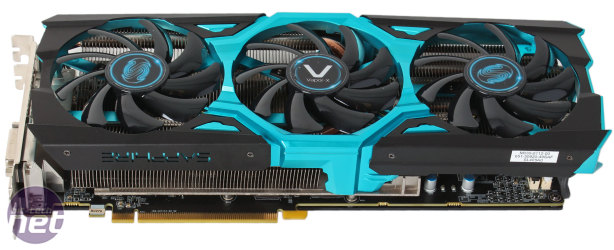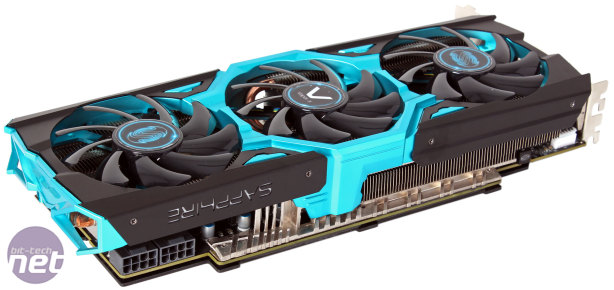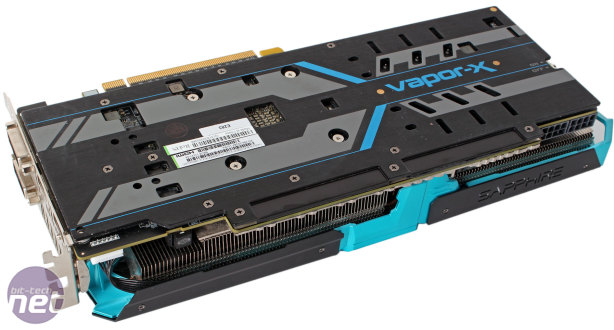Performance Analysis
In Battlefield 4, the Sapphire card is nipping at the heels of the R9 290X, finally catching up to it at 5,760 x 1,080 and then actually overtaking it at 4K, where it has the best result of any single GPU result (the R9 295X2 is still leagues ahead). It also manages to supersede the GTX 780, which neither the stock speed R9 290 nor the Asus card could do. That said, when comparing the results to those from Asus, the Sapphire card is only 1 or 2fps quicker, which makes sense given the relatively low core clock speed difference.In BioShock Infinite the Vapor-X OC card is again close to or on par with the R9 290X and is again actually a little faster at 4K. This time around, however, the GTX 780 is faster overall, and does particularly well in the triple screen test with a minimum frame rate of over 30fps where the Sapphire card manages a more jittery 28fps.
In Crysis 3, it again trades blows with the R9 290X in the single screen tests and is also faster than the GTX 780 again. It has a great result at 5,760 x 1,080, as it actually bests the GTX Titan Black and is the only single GPU card to achieve what is technically a playable result with a minimum frame rate of 25fps. Realistically, 25fps in Crysis 3 will be a sub-par experience, but even so it's a good result, and on the average frame rate it's also a whole 12 percent quicker than the GTX 780 at this demanding resolution.
Our final game Skyrim is mainly useful for comparing lower-end cards, but even so the Vapor-X OC is able to flex its muscles, besting both the GTX 780 and the R9 290X. The 4K test is again particularly beneficial for AMD's Hawaii GPU, as the Sapphire card is 7fps quicker than the GTX 780 on the minimum frame rate – a bigger difference than we're used to seeing.
The card's performance in Unigine Valley is neck and neck again with the R9 290X, scoring slightly less than it at 1080p and slightly more at 1440p. At this latter resolution it's also close to the GTX 780's score but it can't overtake it. Its score here of 2,389 is also 8 percent ahead of the R9 290 at stock speeds – right in line with the factory overclock.
Power consmption for the card is undeniably hard, and unlike the Asus R9 290 DirectCU II OC, the Vapor-X appears to make no improvements when it comes to efficiency. System power draw is 20W higher than with the R9 290 and a whole 56W more than when using the GTX 780. The thermal results are excellent as it's right on par with the Asus model. Thankfully, even in lengthy game sessions the card is very quiet too.
With a 15 percent core overclock and 18 percent memory one, performance improves in our selection of benchmarks by between 14 and 17 percent. In both Battlefield 4 and Crysis 3 at 2,560 x 1,440, the card actually surpasses the performance of Nvidia's GTX Titan Black when overclocked. It's unable to do the same thing in Unigine Valley, but Nvidia cards typically have the upper hand in this benchmark. The overclock also took our system power consumption even higher to a whopping 504W, while the delta T went from 49°C to 56°C and noise increased only very marginally. This is a good result, as the Asus R9 290 went up by 12°C and was more obviously louder when we overclocked it.

MSI MPG Velox 100R Chassis Review
October 14 2021 | 15:04













Want to comment? Please log in.